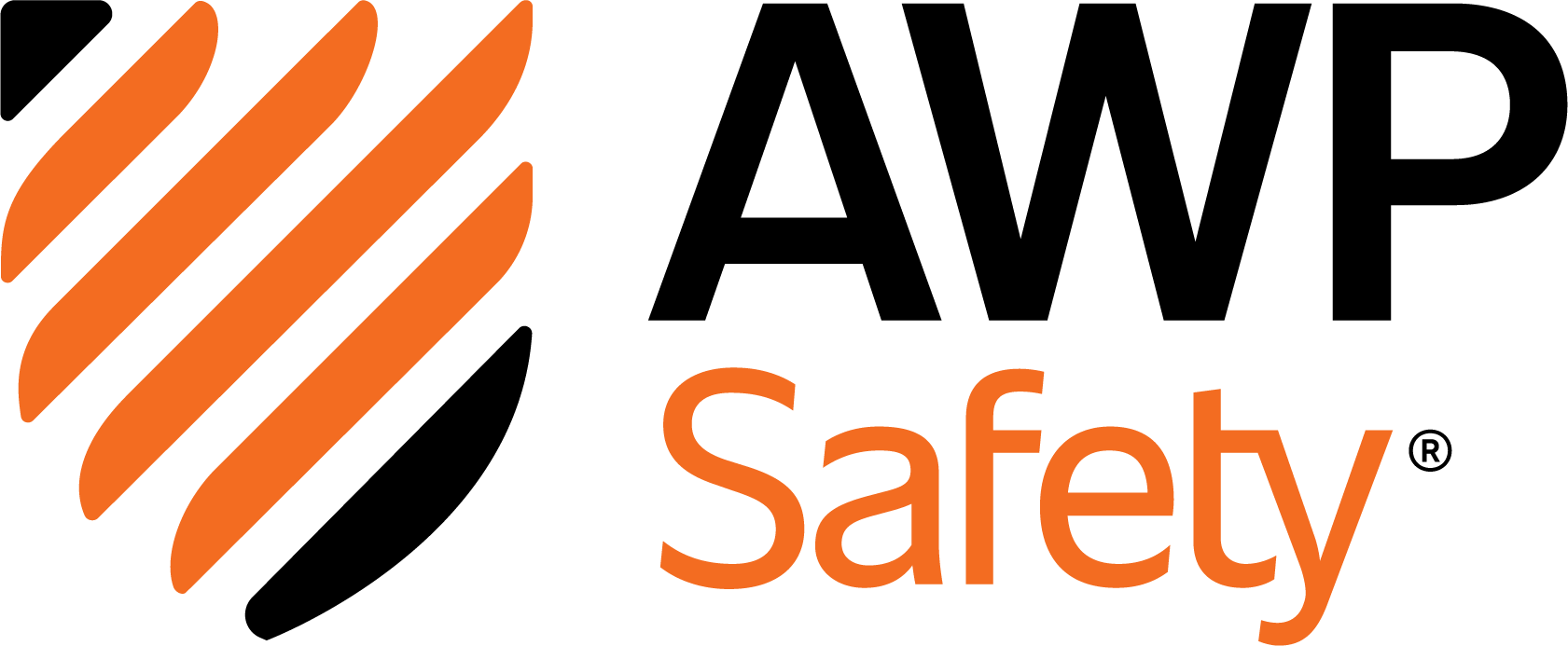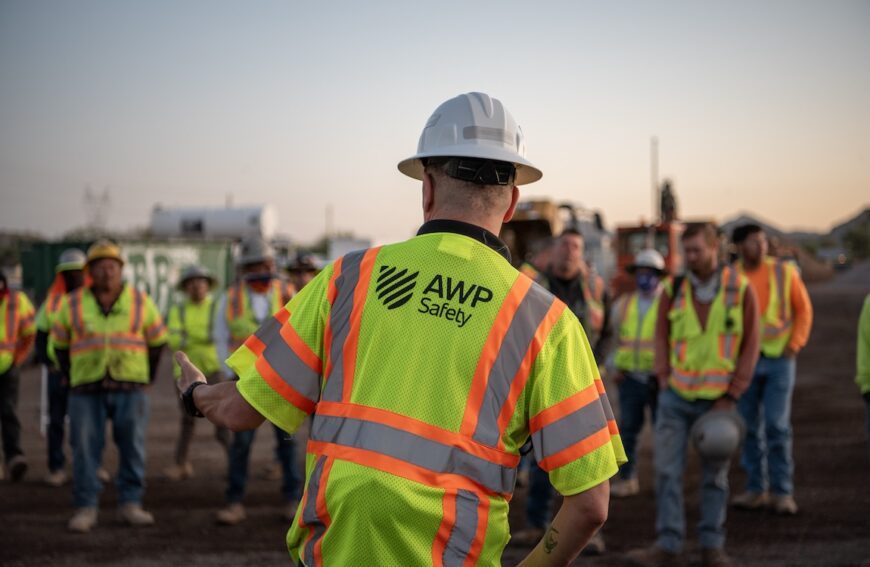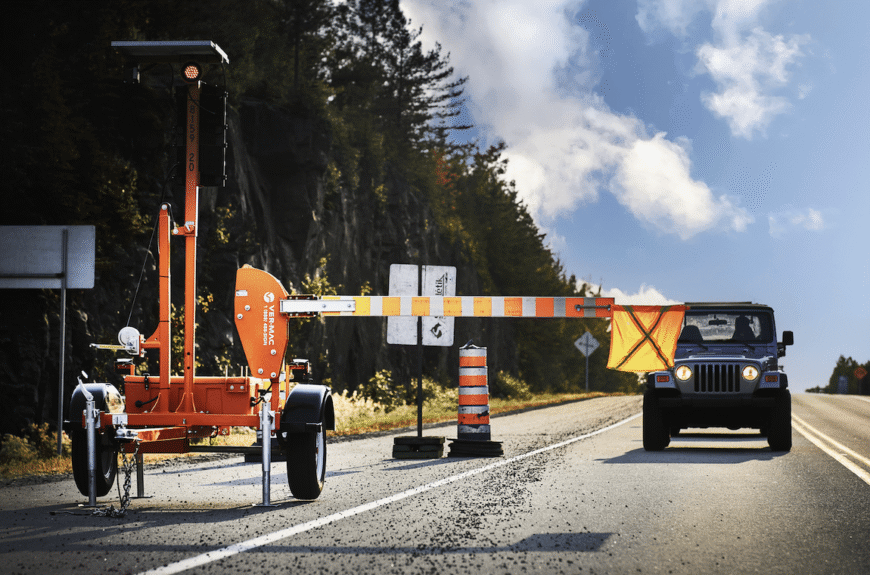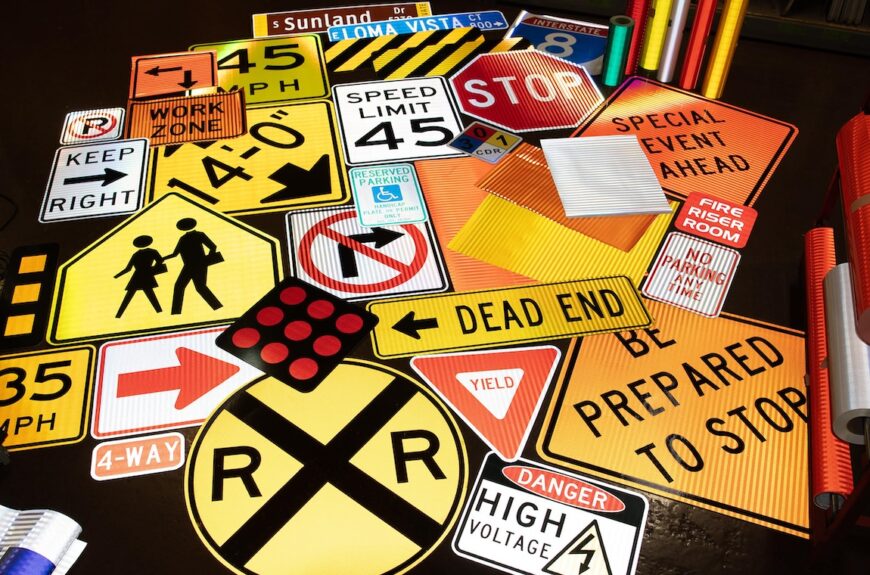
Which Traffic Control Signs Require Hi-Viz Reflective Materials?
Traffic control signs often require or are recommended by the MUTCD (Manual on Uniform Traffic Control Devices) to use hi-viz reflective materials. Ryan Dobbins, AWP Safety’s vice president of environmental health and safety, shares an overview of traffic control signs, reflective materials, and MUTCD traffic control sign requirements and recommendations. His article was also featured by the National Safety Council in Safety & Health.
Hi-viz reflective materials are baked into the MUTCD for a lot of the signs you see every day. They’re there to make sure drivers can read and react – whether it’s in broad daylight, pouring rain or the middle of the night.
Here’s a quick overview of traffic control signs:
- Regulatory signs (stop, yield, do not enter, speed limits, etc.) must all be retroreflective or lit so that they look the same shape and the same color at night as they do during the day.
- Warning signs (curves, intersections, deer crossings or “workers present”) are diamond-shaped (black legend/border on orange or yellow) and need retroreflective sheeting to ensure headlights bounce back to the driver.
- Fluorescent yellow green is the go-to for signs in school zones and high pedestrian or bicycle areas because this color demands attention. Compared with standard yellow, it’s more visible in low-light, foggy and rainy conditions. Even in broad daylight, it’s an extra attention-grabber.
- Fluorescent orange is the work zone MVP of traffic safety because it cuts through the visual clutter even when conditions aren’t great. Standard orange already signals “construction ahead,” but fluorescent orange makes signs more visible at dawn and dusk.
- Guide signs (route numbers, destinations, directions, etc.) are generally required to be retroreflective to make sure those white letters on green or blue backgrounds stay crisp and visible under headlights, so a driver doesn’t miss their turn or slam on the brakes at the last second.
- Object markers (bridge piers, utility poles or raised medians) alert drivers to fixed obstacles that are placed dangerously close to the path of moving vehicles. During the day, they’re usually easy to spot, but at night, in the rain or when a driver is fatigued, those objects can disappear until it’s too late. These markers must be retroreflective or illuminated.
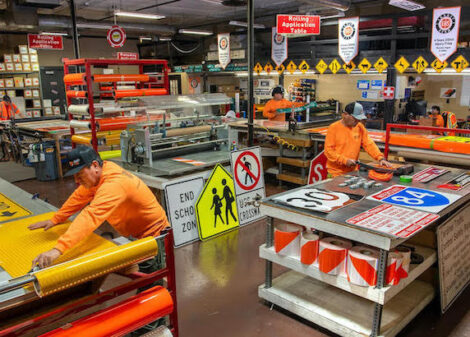
Some signs get a pass, including certain parking, standing and stopping notices; specific pedestrian/bike signs; and blue or brown background signs. Bikeway signs meant only for cyclists or pedestrians can also be exempt. And, if a sign is internally illuminated, it may not need retroreflective sheeting.
It’s also important to note that retroreflective sheeting offers different performance levels. The MUTCD recognizes characteristics such as “engineer grade,” “high intensity” and “diamond grade” that step up gradually in terms of brightness and durability.On the scale of reflectivity, “engineer grade” is your starter level and adequate for low-speed or low-volume traffic.
“High intensity” climbs the ladder by throwing back more light and enduring longer where speed limits and the stakes are higher. “Diamond grade” is the overachiever of the group because it lights up like a beacon on highways, ramps and places where drivers need warning well before they get there (sharp curves and complex interchanges, for example).
The bottom line: MUTCD guidance is all about making sure signs can be seen, read and acted on in time to keep people safe.
From sign rental to custom traffic sign manufacturing, AWP Safety can help with your traffic control sign needs. Browse our traffic control signage to learn more.
